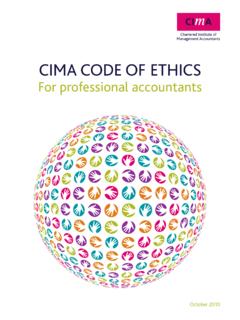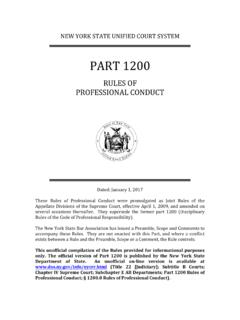Transcription of Commedia dell Arte Curriculum Guide - Faction of Fools
1 Commedia dell Arte Curriculum Guide Updated January 2011 2 Dear Teachers, Faction of Fools Theatre Company is devoted to preserving and promoting the classical style of Commedia dell Arte. Curriculum Guides are designed as a resource both for teachers and students. We encourage you to photocopy articles you find helpful and distribute them to your students as supplemental reading. This Curriculum Guide contains material about the history of Commedia dell Arte, the masks, and the acting style. Also included are approaches to explore the style in the classroom to help students form a deeper understanding of and appreciation for the art form. We hope that this Curriculum Guide will prove useful as you explore this classical art form and prepare to bring your students to the theatre! Sincerely, Faction of Fools Table of Contents A History of Commedia dell Arte 3 Matthew R.
2 Wilson, Unmasked 6 The Characters 8 Further Resources 9 Classroom Activities 10 Contributors The Faction of Fools Curriculum Guide includes articles and activities contributed by Denise Perrino, Vanessa Buono, and Matthew R. Wilson. In School Programs To bring a show or workshops to your school, please contact Denise Perrino, Director of Education Mission Statement Faction of Fools Theatre Company celebrates Commedia dell Arte in Washington, DC and around the world. We preserve and promote this Renaissance theatre style by both respecting its heritage and exploring its future. We embody the spirit of Commedia , which is traditional yet innovative, international yet familiar, and classical yet accessible. In our performances, actor training, international initiatives, and educational outreach, Commedia dell Arte is theatre at its best: physical discipline, spontaneous imagination, collaborative energy, and joyous wonder.
3 Faction of Fools is a 501(c)(3) not-for-profit organization. 3 A History of Commedia dell Arte Commedia dell Arte (which translates as theatre of the professional ) began in Italy in the early 16th Century and quickly spread throughout Europe, creating a lasting influence on Shakespeare, Moli re, opera, vaudeville, contemporary musical theatre, sit-coms, and improv comedy. The legacy of Commedia includes the first incorporated ( professional ) theatre company, the first European actresses, and many of the themes and storylines still enjoyed by audiences today. The style of Commedia is characterized by its use of masks, improvisation, physical comedy, and recognizable character types. According to the Maestro Antonio Fava, the famous character types can be divided into four main categories: (1) The Servants or Zanni such as Arlecchino (Harlequin), Pulcinella (Punch), Colombina (Columbine), Scapino (Scap n), Brighella, Pedrolino, Pierrot, and the like; (2) The Old Men or Vecchi such as the greedy Magnifico (Pantalone), the know-it-all professor (il Dottore), or the stuttering Tartaglia; (3) The young Lovers or Innamorati with names such as Isabella, Flaminia, or Ortensia (for women) and Flavio, Orazio, Ortensio, or Leandro (for men).
4 (4) The boasting Captains or Capitani and their female equivalent, the vivacious and oftentimes violent La Signora. Hundreds of character names exist, each the invention of a particular actor, but all of them can be viewed as a derivative or hybrid of these four major character types. Commedia s origins have not been conclusively determined, and scholars have demonstrated a variety of possible factors in its development: the masked, improvised comedy of the Roman Atellan farce tradition; the mime theatre of the Byzantine world; the jugglers and traveling players of Medieval Europe; the market culture of early modern piazzas that featured performers, charlatans, and festivals; and Renaissance rediscoveries of Plautus and Terrence by theatre Academies and the Commedia erudita tradition. Whatever its origins, by the 1520s, performers like Angelo Beolco (il Ruzzante) and early practitioners of the Zanni character type were entertaining audiences with a style that appears to be early Commedia .
5 Some early references to this style include names like Commedia all improvissa (the improvised theatre) and Commedia zannesca (the zanni-esque theatre). Master-servant scenarios became somewhat more sophisticated as the Old Man character type emerged to boss the Zanni around. Early female servants (zagna, singular; zagne plural) were played in masks by male performers. A major landmark in theatre history occurred in Padua, Italy, on February 25, 1545, when Ser Maphio s troupe of performers signed a letter of incorporation establishing themselves as a fraternal compagnia. (The anniversary of this date is celebrated every Commedia dell Arte Day.) This document is the oldest extant record of modern actors thinking of their work as a legitimate business. Other troupes of this era had similar endeavors, and the business of show business was born when artist-entrepreneurs began to create professional models for making a living in the theatre.
6 This capitalistic innovation represents a departure from classical models of civically funded theatre or medieval models of amateur, pan-handling, or church-funded performances. Another major landmark in theatre history was first confirmed in 1566 when a Commedia performer named Vincenza Armani became the first documented professional actress. (She took 4 the stage in Mantua almost a full century before a professional actress appeared in London s theatres.) Evidence exists as early as the 1540s that Commedia troupes began to create professional space for female performers, but the late 1560s and 1570s were the Age of the Actress. Isabella Andreini became one of the most famous and sought-after performers in all of Italy and France, and her contribution to Commedia dell Arte is still seen in the most prevalent name for the leading female Lover: Isabella.
7 The advent of the actress occasioned a new character type: the male and female Lovers or Innamorati (innamorato, masculine; innamorata, feminine) who became the children of the Old Men. These additional characters allowed Commedia troupes to employ far more sophisticated dramaturgy and storylines, and the resultant tradition was dubbed the Perfect Comedy because of its balance of highbrow and lowbrow themes and its complicated plot twists centering on the thwarted dreams of young Lovers. The story of troubled young love became a hallmark of the Italian Comedy and is seen most famously in Shakespeare s Romeo and Juliet. (But remember: If Shakespeare had actually been from Verona, Juliet would not have been played by a boy.) The advent of the actress also establishes a new tradition of unmasked characters in the Commedia dramatis personae.
8 Whereas female characters had previously been played by men wearing grotesque female masks, actresses performed without masks exposing their own authentic (and reportedly beautiful) female faces. The male Lovers, as their counterpoints, also performed unmasked, and additional unmasked characters came to include the servetta (French, soubrette), an unmasked female servant like the famous Colombina. The infarinato tradition (such as the character Pedrolino) was a male servant who played in white face (hence the term infarinato, meaning floured. ) This white-faced comic servant is an ancestor to the white-faced clown of the circus tradition and the modern, white-faced pantomime. The fourth character type is the Capitano, a boasting but fraudulent war hero, much like the miles gloriosus ( glorious solider ) character of Roman comedy. The Capitani are famous for their sonorous and bombastic names such as Capit n Sangre y Feugo, Capit n Escombombard n, and Capitano Spavento della Valle Inferno.
9 (The last was created and performed by Isabella Andreini s real-life husband, Francesco.) Unlike their counterparts in England, who founded an industry on the reputation of key playwrights (Marlowe and Shakespeare, for example) and the success of their own purpose-built theatres (the Theatre, Curtain, Rose, and Globe, to name a few), Commedia dell Arte players capitalized on the virtuosity of the performer as showcased in improvised performances that could be staged wherever necessity demanded. The depiction of Commedia dell Arte as street theatre is a simplified myth, for the reality was that Commedia players performed wherever possible but ideally indoors where it was easier to monitor ticket revenue and to control the various aspects of the performance. Undoubtedly, most companies frequently played on touring stages in piazzas, but the most famous companies enjoyed indoor bookings at public meeting halls (the stanze; stanza, singular) or by commission at court.
10 In fact, the famous Teatro all Antica in Sabbioneta was intended to house a resident Commedia troupe, a plan ultimately cut short by the death of the benefactor Duke Vespasiano Gonzaga Colonna in 1591. The traveling Commedia troupes consisted of 12 or so professional performers, each a specialist in his or her character. There were no playwrights or directors. The company manager (capocomico) would announce the title and theme of an evening s performance, making a scenario or canovaccio available to the performers. Some 800 historical canovacci survive most notably 5 in the Scala scenarios published in Venice 1611 and in the recently published Casamarciano scenarios housed at the National Library of Naples. Most scenarios are approximately three pages long and describe the basic plot points of the story with character entrances and exits indicated.







